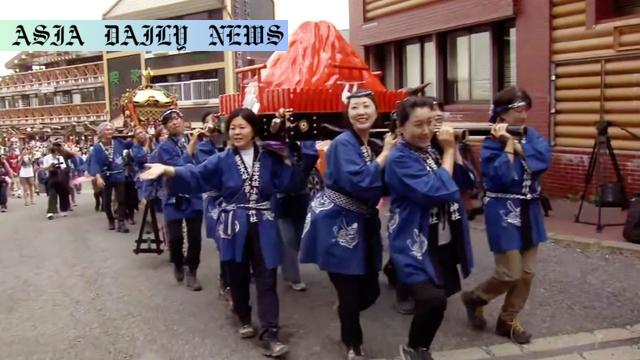Mount Fuji: Japan implements key restrictions for climbers to preserve its environment and prevent overcrowding in the summer season.
- Yamanashi Prefecture enforces new measures to ensure sustainable climbing on Mount Fuji.
- Daily climber limit of 4,000 and a mandatory climbing fee of 4,000 yen implemented.
- Climbing trail is closed during specific hours to prevent overnight ‘bullet’ climbs.
- The restrictions aim to preserve Mount Fuji and address over-tourism and safety issues.

Introduction: The New Era of Mount Fuji Climbing
Mount Fuji, a majestic UNESCO World Heritage site, has long been a spiritual and cultural symbol of Japan. Every summer, the iconic peak draws thousands of climbers from across Japan and the globe, seeking to conquer its summit. However, the increasing popularity of Mount Fuji has posed significant challenges, including overcrowding, environmental degradation, and the risks of ‘bullet’ climbs—overnight ascents that often lead to accidents or exhaustion. This summer, Yamanashi Prefecture has introduced new, robust measures to ensure that climbing Mount Fuji is both safe and sustainable.
Key Measures Introduced for Climbers
To address the issues surrounding Mount Fuji’s climbing season, Yamanashi Prefecture implemented groundbreaking regulations. These include a daily limit of 4,000 climbers starting from the fifth stage and a mandatory climbing fee of 4,000 yen (approximately 28 USD). The climbing trail will also be closed from 2 p.m. until 3 a.m., curbing the problematic trend of all-night ‘bullet’ climbs. These measures aim to reduce overcrowding, manage environmental impact, and prioritize climber safety.
The Process of Climbing Mount Fuji in 2023
Climbers now need to make advanced reservations online, where they receive a QR code upon payment of the climbing fee. Upon arrival at the fifth stage, climbers must show their QR codes to gain entry and receive wristbands to wear during their ascent. Security checks at the entrance ensure compliance with these regulations, creating an orderly and controlled climbing environment. The process has been designed to streamline access while promoting respect for Mount Fuji’s natural and cultural significance.
Climber Reactions and the Need for Conservation
These measures have received mixed reactions. While many climbers recognize the necessity of such restrictions to preserve the mountain and ensure safety, others have expressed concerns, particularly over the climbing fee. A university student from Aichi Prefecture voiced that the cost could be burdensome for students or budget travelers. Nevertheless, there is widespread agreement on the importance of protecting Mount Fuji’s beauty and sanctity for future generations.
Future Implications and Preservation of Mount Fuji
With these regulations, Yamanashi Prefecture takes a significant step toward sustainable tourism and environmental conservation. The focus on limiting climber numbers and discouraging reckless behavior reflects a shift in how cultural landmarks are managed in the face of rising tourism. This season’s changes could serve as a blueprint for other tourist hotspots grappling with similar issues. Notably, Shizuoka Prefecture, which opens its side of the mountain on July 10, may also adopt stricter measures in the future.
Conclusion
Mount Fuji’s allure is undeniable, and its preservation is crucial not only for Japan but also for the global community that admires this awe-inspiring peak. Yamanashi Prefecture’s initiatives balance accessibility, safety, and conservation, ensuring that this treasured landmark continues to inspire climbers for generations. Through cooperation and respect for these new measures, climbers can experience Mount Fuji responsibly and meaningfully.



Commentary
Reflections on Mount Fuji’s New Climbing Measures
The new measures implemented by Yamanashi Prefecture to regulate Mount Fuji’s summer climbing season showcase a thoughtful response to modern challenges in tourism. Mount Fuji has always been not just a physical landmark but a cultural and spiritual symbol of Japan. As a result, these regulations transcend mere logistics—they represent an effort to preserve something far greater: the dignity and sanctity of this globally admired mountain.
Balancing Tourism and Conservation
Tourism, while essential for the local economy, can strain natural resources and cultural landmarks if left unchecked. The introduction of a climber limit and a mandatory fee reflects Yamanashi’s commitment to finding this balance. While some might see the 4,000 yen fee as steep, it’s essential to view it as an investment in the mountain’s preservation. From waste management to safety personnel, these funds ensure that Mount Fuji remains pristine for future generations.
Addressing Safety Concerns and Reckless Behavior
The closure of trails during certain hours is another excellent move aimed at promoting safety. Overnight ‘bullet’ climbs may seem adventurous but often lead to exhaustion, accidents, and unnecessary crowdedness near the summit. By limiting these ascents, Yamanashi has prioritized the well-being of climbers over sheer convenience. This change fosters a safer, more enjoyable climbing environment.
Looking Ahead
Mount Fuji’s new measures could set a precedent for sustainable tourism worldwide. Other popular landmarks facing similar challenges may adopt similar approaches to manage overcrowding and ensure safety. Beyond the regulations, these changes serve as a reminder of the respect we owe to cultural and natural treasures.
In conclusion, Yamanashi Prefecture’s approach to Mount Fuji’s climbing season is a commendable blend of practicality and vision. The mountain will continue to inspire countless climbers, but now, under conditions that honor both its grandeur and fragility.